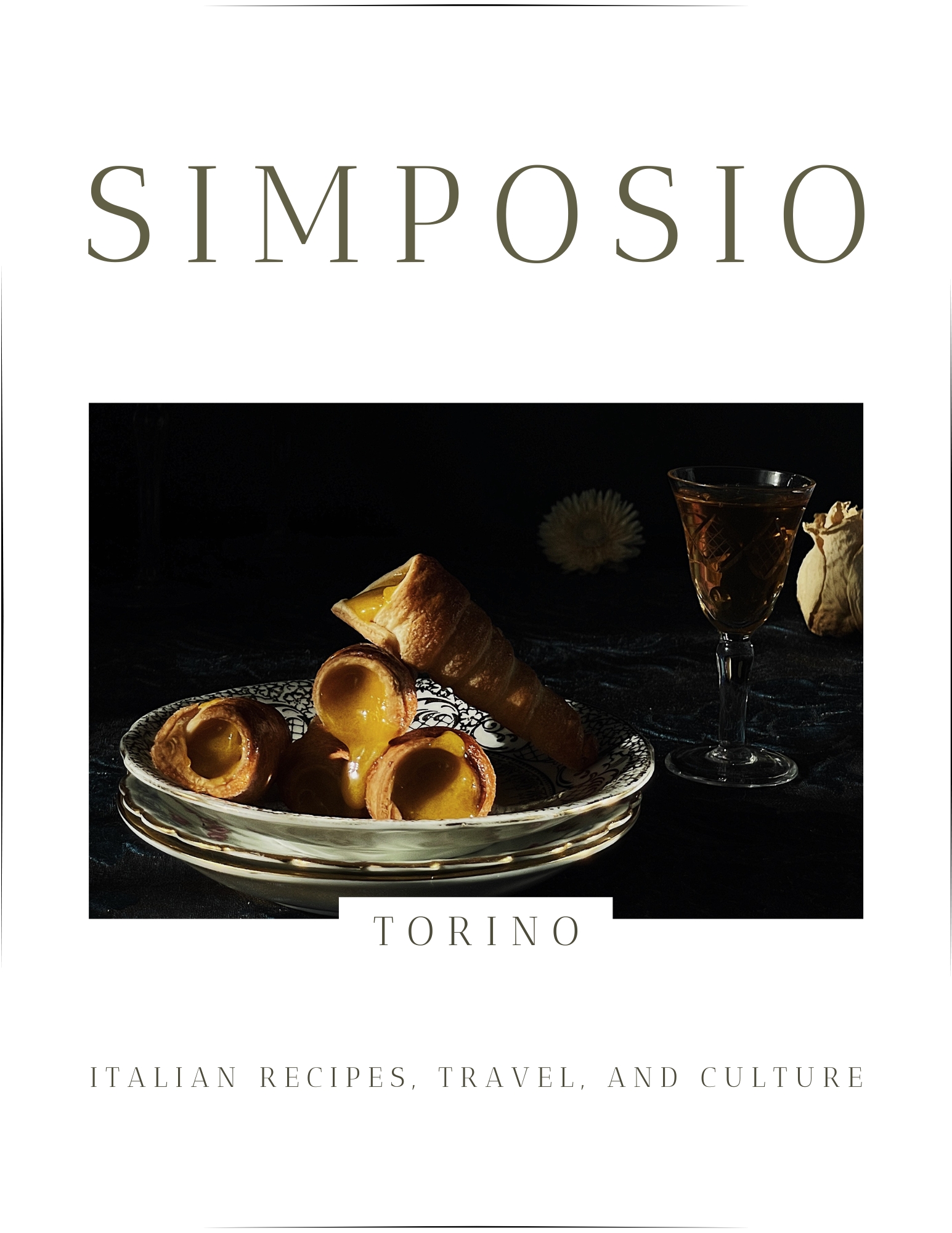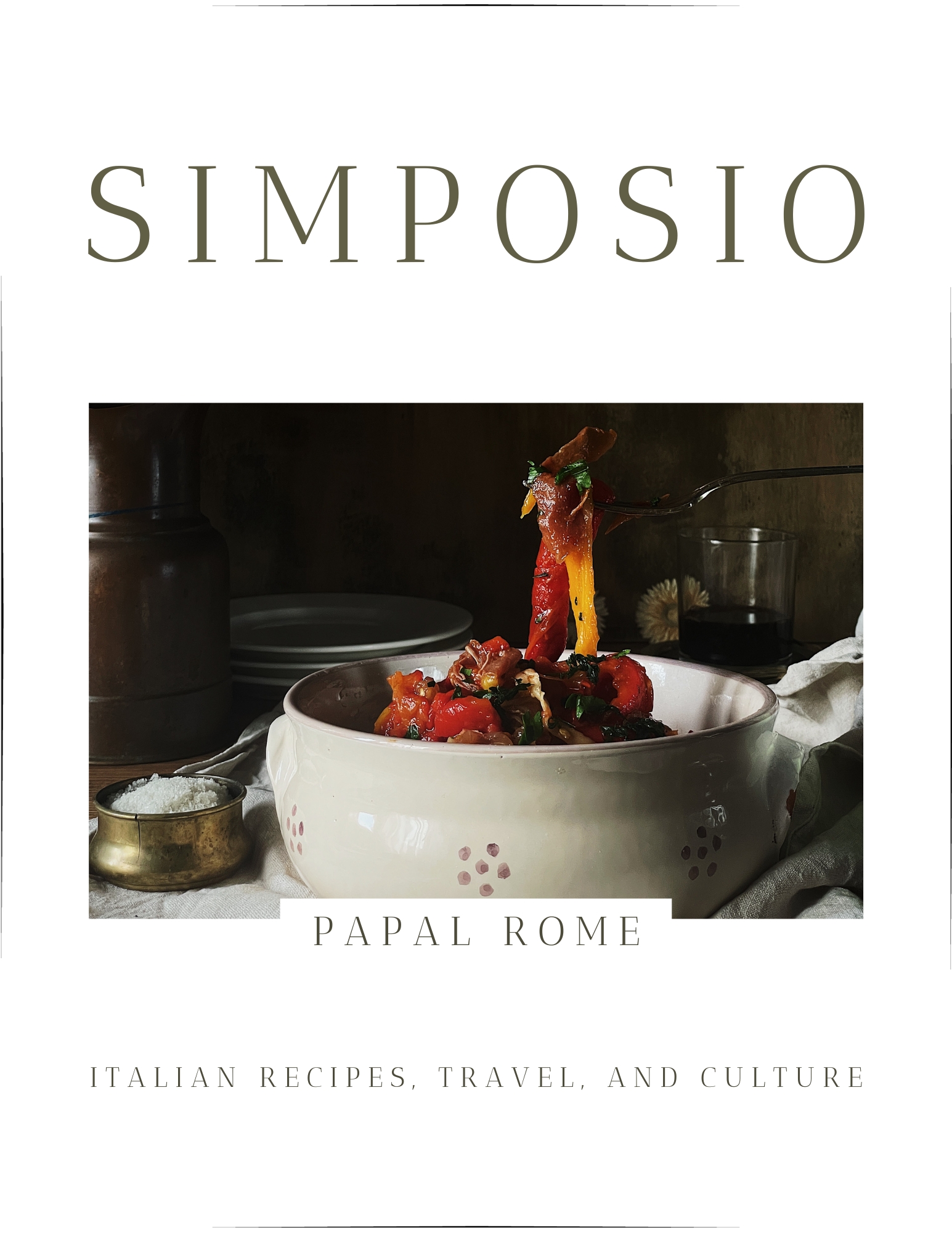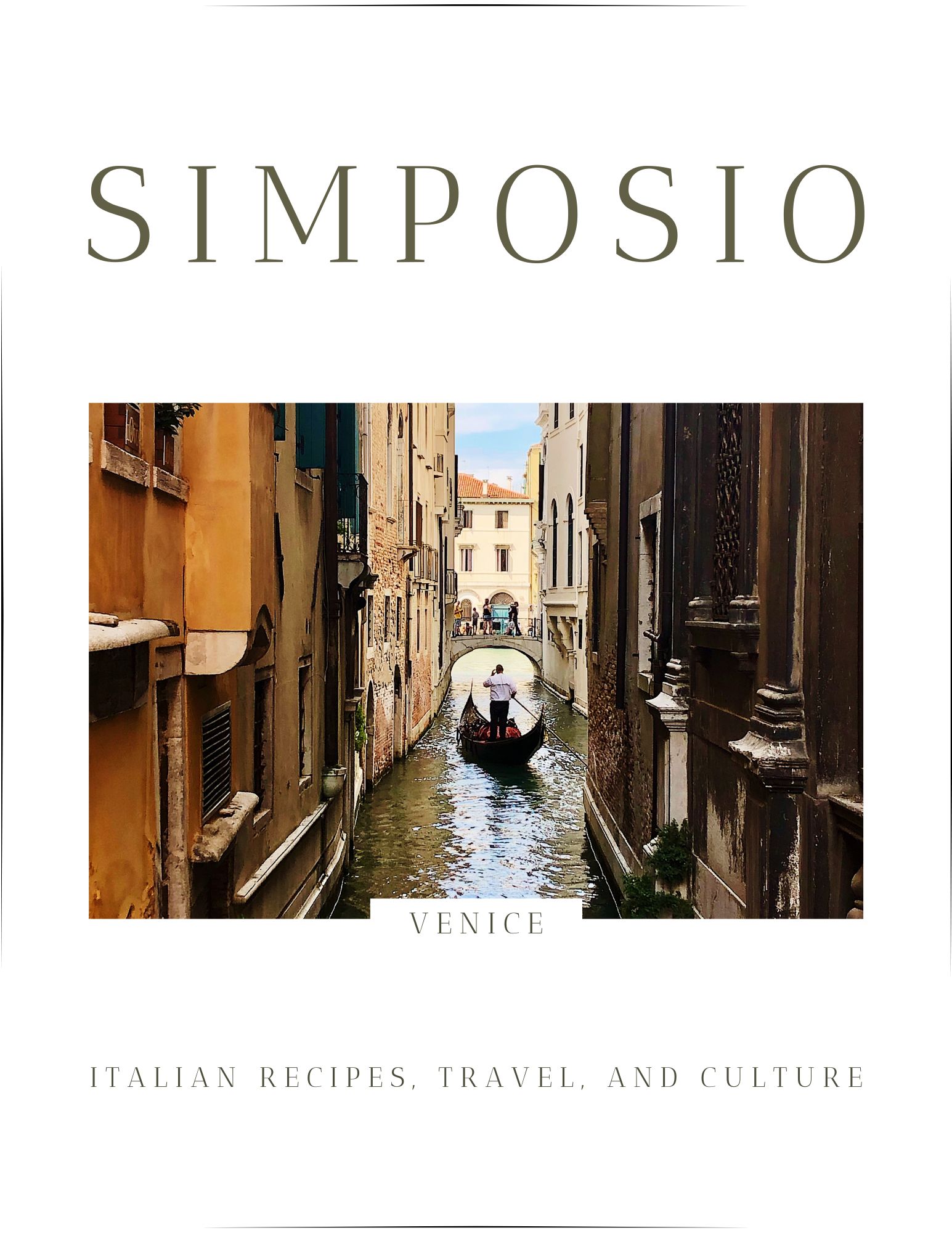How Italians cook pasta: how long, how much water and salt, and the basics of cooking dry pasta the Italian way.
In this post, you will learn how to cook pasta properly, the Italian way. You will also learn how much water and salt you need to make pasta, how to make pasta “al dente”, the serving sizes, the shapes and condiment pairings, how to cook pasta for salads, and more.
How Italians cook pasta “al dente”
The first thing to know is that you can’t give an exact time for pasta al dente.
If you ask me how long to cook spaghetti al dente, for example, my answer will be: it depends. The producer must give you the timing because the cooking time depends on the quality of the flour used and the production technique.
what is pasta “al dente”
Let’s start from the beginning: the meaning of pasta al dente.
It literally translates into “to the tooth”, intending that it is pleasurable to bite. Not soggy, that’s never ok, but also a little crunchier than the regular pasta cooking time.
Depending on your taste, this means 1 to 2 minutes less than the regular cooking time, the one indicated on the package directions. Taste it two minutes before, and see if you like it, if not, wait a minute more. To be sure the pasta is cooked, take a bite and look at the center: too white? It still needs cooking.
why Italians cook pasta “al dente”
Italians usually cook pasta al dente because it has a better texture (it is firmer), and it is easier to digest, as it has a lower glycemic index.
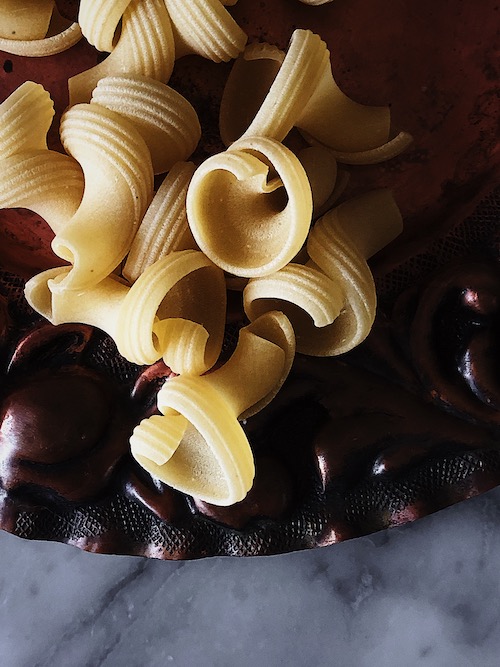
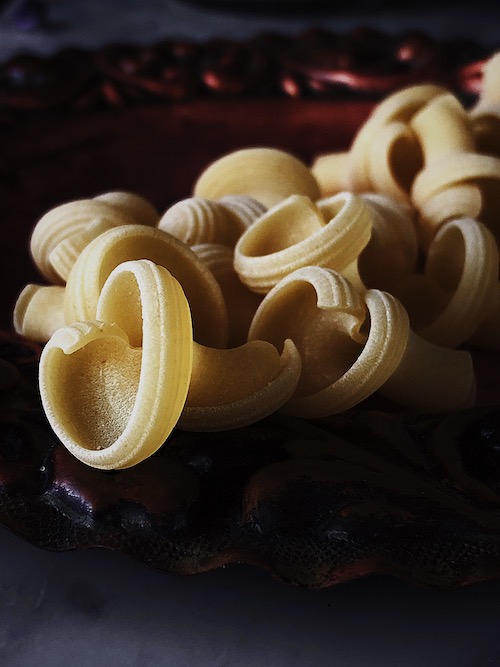
how much water do you need to cook pasta
To cook pasta, you need a lot of water: 1 liter (1/4 gallon or 4 cups) for each 100 gr (3.5 oz) of pasta.
how much salt to cook pasta
Pasta water must have salt: 10 gr (0.35 oz or about 1 teaspoon) of coarse salt for every liter (4 cups) of water.
Remember this easy rule: 1-10-100 (water liters, salt grams, pasta grams).
But if the seasoning for your pasta is pretty salty already, reduce salt to 5-7 grams.
Usually, Italians put salt in the water only when it is boiling because they believe salted water takes longer to boil. There is no scientific evidence, so put salt in the water whenever you want to, but before tossing the pasta.
Italians’ pasta serving sizes
100 gr or 3.5 oz is what, in Italy, we consider a regular pasta serving size.
If the condiment is rich, like ragù, Italians usually lower it to 80 gr (2.8 oz); if they are hungry – and not on a diet – they eat up to 120 gr (4.2 oz).
In Italy pasta is a main dish
Here in Italy, pasta is considered a main dish, not a side dish. Sometimes it is also the only course of a meal (“piatto unico”): if you put together grains, veggies, and proteins, your dinner is balanced, and you are more than satisfied. Think of the simple tomato spaghetti: you have grains from the pasta, veggies from the tomato sauce, and proteins when you sprinkle delicious parmesan cheese on top.
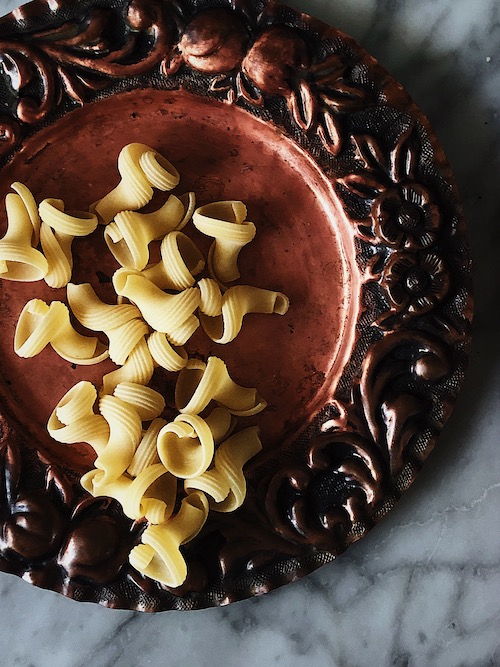
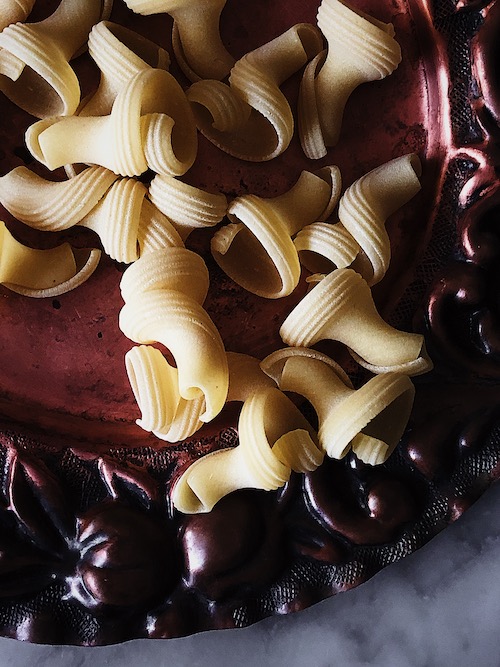
Do Italians eat whole wheat or white pasta?
Mainly, Italians eat white pasta. A minority, driven by healthy issues, add whole wheat pasta to their diet, but they rarely substitute it completely. White pasta is part of our tradition, and the flavor is unbeatable. So expect whole wheat, farro/spelt (in my opinion much tastier), and Kamut pasta in grocery stores and some pantries, but as an exception.
We leave rice and buckwheat noodles to Asian cuisine.
Italy’s pasta shapes: a guide
Italy has infinite pasta sizes and shapes: each region has one or more traditional shapes. They result from years of culinary traditions and researching the perfect shape to pair with the local ingredients and seasonings.
As a general rule: rough and ridged pasta hold back the seasoning, but they also absorb it, so if you have a dense condiment and pair it with rough pasta, you might get a dry, heavy result. In that case, you should opt for a smooth pasta shape.
Can you cook two different types of pasta together?
Sure, we do it all the time with leftovers! You just have to calculate the different cooking times. Then toss the pasta shape that takes longer – see the package directions – into the boiling water, wait for the timing gap you calculated, then add the other shape and cook for the latter’s cooking time.
long or short pasta pairings
The choice between long or short pasta depends mainly on personal taste and traditional recipes. The truth is Italians often end up using whatever pasta they have in the pantry.
However:
- buttery or meat condiments should be paired with short pasta;
- oily, fishy, or veggie condiments should be paired with long pasta.

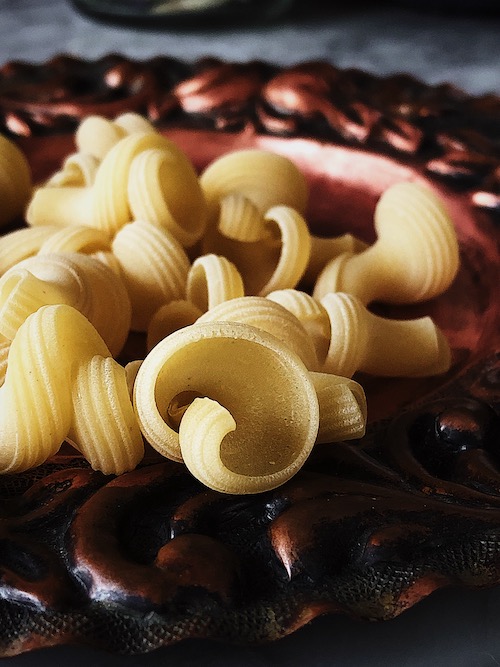
one-pot pasta
One-pot pasta is a nontraditional, modern way to cook pasta. You put pasta, water, salt, oil, and your choice of condiment in the pot or a pan, and cook the pasta without draining it.
Note that a pan is better than a pot.
The difficult part is deciding the quantity of water to add: I usually start with two times the pasta weight in water and then progressively add more (hot) – to be sure I don’t overcook it.
The result is a very creamy pasta dish: when you drain water, you also discard the starches released by the grains; here, instead, they are absorbed by the condiment.
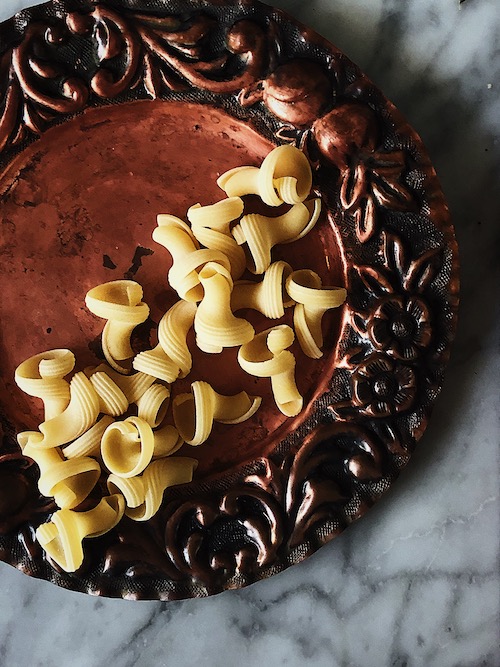
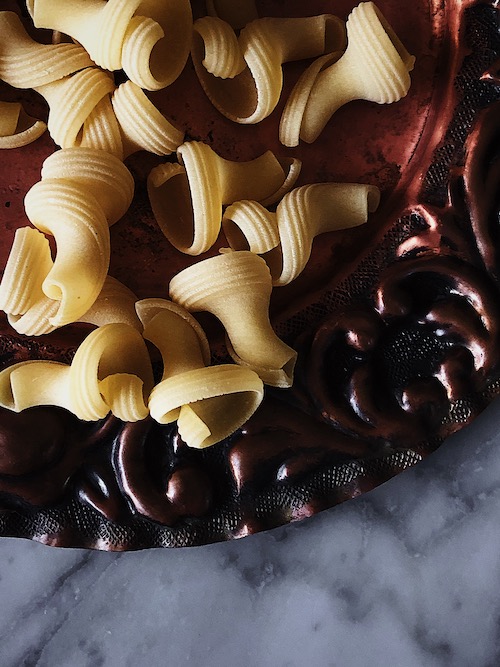
how to cook pasta for salads
If you are making pasta for a pasta salad, cook it 2 minutes less than the package directions, drain it, and spread it on a large plate/surface, on one layer, until it reaches room temperature. This avoids the cooking continues and unpalatable sogginess.
Now that you know everything about how to cook pasta, go turn on the heat and enjoy a delicious Italian meal!
Enjoy.
Claudia

